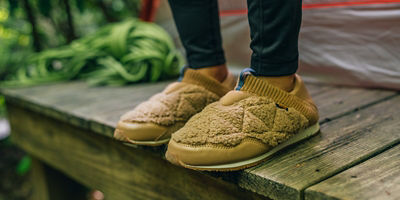
Nights are long in the cold season, so you’ll likely be snuggling into your bag for at least a few extra hours in your tent. And winter’s bone-chilling temperatures demand an ultra-toasty bag—if you overestimate your model’s warmth in the summer, you can probably still make it through the night all right. Not so in winter. Plus, you’ll need a sleeping bag with the features to deal with the unique challenges of snow travel. Here’s what to consider when you extend your camping season into the cold months.
In this article, you’ll learn:
- What temperature ratings to look for in a winter bag
- Pros and cons of synthetic versus down insulation
- Features that protect against winter moisture
- How to choose the right shape and size
- Which special features to look for
Temperature Rating
Winter sleeping bags, like all sleeping bags, have standardized warmth ratings called ISO or EN ratings. In milder climates, a 10- or 15-degree bag can be enough to get the job done. A 0-degree bag will probably be comfortable in a wide range of winter conditions. And if you’re heading into high-alpine terrain, frigid temps, and/or polar regions, look in the minus 20- to minus 40-degree range.
Insulation
Your choices are still synthetic fill and down, but your calculus might change a bit when you compare winter options.
Synthetic insulation is warm even when wet and the most affordable option, but it makes for heavier, bulkier sleeping bags. If weight and size aren’t a problem on your winter excursions—say, for car camping, hunting, or shorter hauls into a base camp—then synthetic bags can be a good choice.
Down insulation is more compressible than synthetic fill and warmer for its weight, reducing bulk. And most down is treated for water resistance these days, so down bags can handle moderate moisture. If you’ll be carrying all your gear on your back for backpacking, mountaineering, or ski touring, a down sleeping bag will stuff more warmth into an easier-to-pack size.
Fill power is an important stat for down bags. It measures the “loftiness” of the plumage used: The higher the rating, the less insulation you’ll need to achieve the same warmth, and therefore the lighter the bag will be. On the flip side, the higher the rating, the more expensive the sleeping bag. For serious cold-weather trips, consider a bag with 800- to 1,000-fill down.












